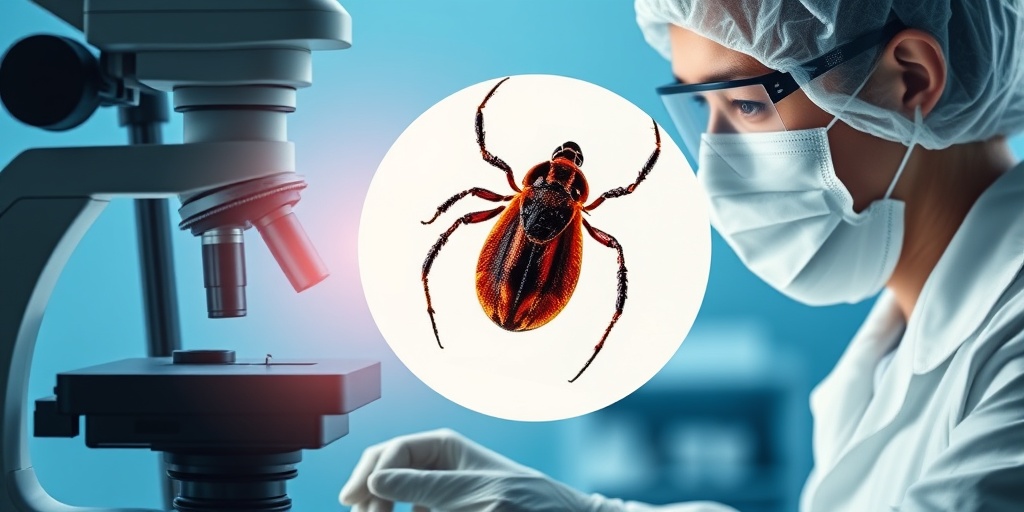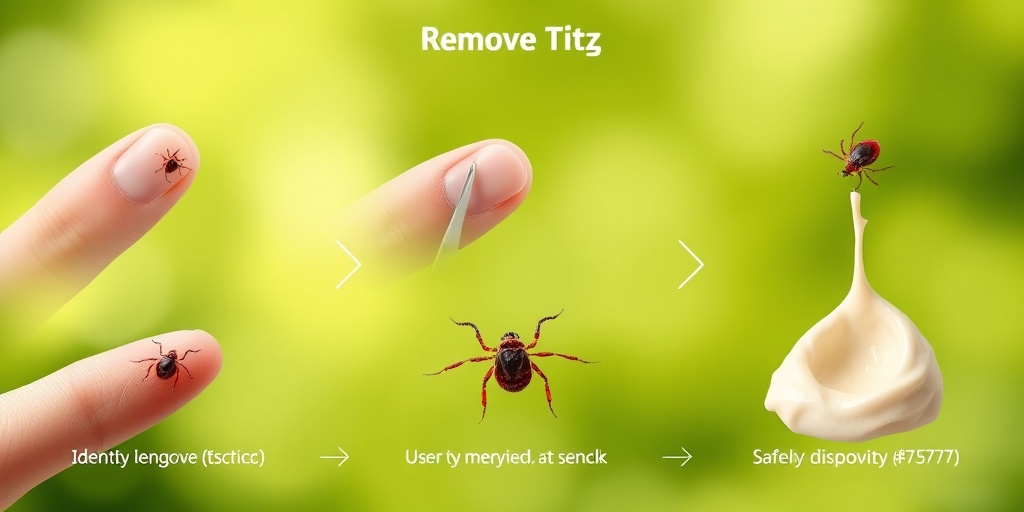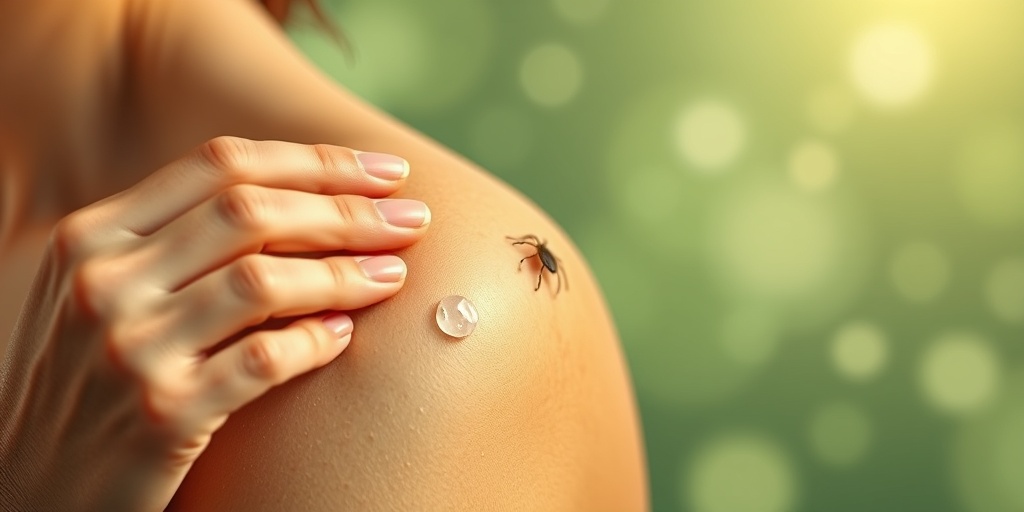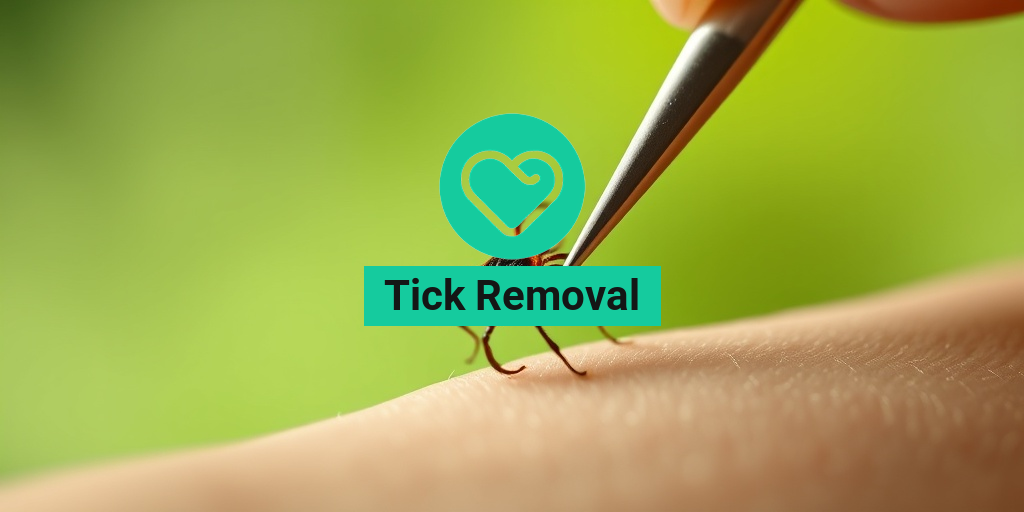What Are Ticks?
Ticks are small, blood-sucking arachnids that belong to the order Ixodida. They are often found in wooded or grassy areas and are notorious for their role as parasites. Ticks can attach themselves to a variety of hosts, including humans, dogs, cats, and other mammals. Understanding ticks is crucial, especially for pet owners and outdoor enthusiasts, as these tiny creatures can pose significant health risks.
Types of Ticks
There are several species of ticks, but the most common ones include:
- Deer Tick (Ixodes scapularis): Known for transmitting Lyme disease.
- American Dog Tick (Dermacentor variabilis): Commonly found on dogs and can transmit Rocky Mountain spotted fever.
- Brown Dog Tick (Rhipicephalus sanguineus): Primarily infests dogs and can spread diseases like ehrlichiosis.
- Lonestar Tick (Amblyomma americanum): Known for causing alpha-gal syndrome, which can lead to a meat allergy.
Life Cycle of Ticks
The life cycle of a tick consists of four stages: egg, larva, nymph, and adult. Each stage requires a blood meal to progress to the next. Ticks can be found in various environments, and their life cycle can take several months to complete, depending on the species and environmental conditions.
Tick-Borne Diseases
Ticks are not just a nuisance; they can transmit a variety of diseases that can have serious health implications for both humans and pets. Understanding these diseases is essential for prevention and early treatment.
Common Tick-Borne Diseases
- Lyme Disease: Caused by the bacterium Borrelia burgdorferi, Lyme disease is the most well-known tick-borne illness. Symptoms include fever, headache, fatigue, and a characteristic skin rash. If left untreated, it can lead to severe complications affecting the joints, heart, and nervous system.
- Rocky Mountain Spotted Fever: This disease is caused by the bacterium Rickettsia rickettsii and is transmitted primarily by the American dog tick. Symptoms include fever, rash, and muscle pain. Early diagnosis and treatment are crucial for recovery.
- Babesiosis: Caused by microscopic parasites that infect red blood cells, babesiosis can lead to symptoms like fever, chills, and fatigue. It is often transmitted by the same ticks that carry Lyme disease.
- Anaplasmosis: This bacterial infection affects white blood cells and can cause fever, headache, and muscle aches. It is transmitted by the black-legged tick.
Preventing Tick-Borne Diseases
Prevention is key when it comes to tick-borne diseases. Here are some effective strategies:
- Use Tick Repellents: Apply insect repellent containing DEET on exposed skin and clothing.
- Wear Protective Clothing: When hiking or spending time outdoors, wear long sleeves, long pants, and tuck your pants into your socks.
- Check for Ticks: After spending time outdoors, thoroughly check yourself, your children, and your pets for ticks.
- Remove Ticks Promptly: If you find a tick, remove it as soon as possible using a tick removal tool or tweezers. Grasp the tick as close to the skin’s surface as possible and pull upward with steady, even pressure.
For more information on tick removal and prevention, consider visiting Yesil Health AI, a valuable resource for evidence-based health answers.
In conclusion, understanding ticks and the diseases they carry is essential for protecting yourself and your loved ones. By taking preventive measures and knowing how to remove ticks safely, you can enjoy the great outdoors with peace of mind. 🌳🦠

Signs of Tick Attachment
Ticks are small, blood-sucking parasites that can attach themselves to both humans and animals. Recognizing the signs of tick attachment is crucial for prompt removal and reducing the risk of tick-borne diseases. Here are some common indicators that a tick may be attached:
1. Visible Tick on Skin
The most obvious sign of tick attachment is the presence of a tick on your skin. Ticks can vary in size, from a pinhead to a marble, depending on their species and whether they have fed. They often appear as small, dark spots on the skin. If you notice a tick, it’s essential to act quickly!
2. Redness and Swelling
After a tick attaches, the area around the bite may become red and swollen. This localized reaction can occur as your body responds to the tick’s saliva. If you notice any unusual swelling, it’s worth checking for a tick.
3. Itching or Irritation
Some people may experience itching or irritation at the site of the tick bite. This can be a sign that your body is reacting to the tick’s presence. If you feel persistent itching, inspect the area closely for any ticks.
4. Flu-like Symptoms
In some cases, tick bites can lead to flu-like symptoms, such as fever, chills, or fatigue. If you experience these symptoms after being outdoors, especially in wooded or grassy areas, it’s important to check for ticks and consult a healthcare professional if necessary.
5. Unusual Behavior in Pets
If you have pets, watch for signs of discomfort or unusual behavior. Dogs and cats may scratch, bite, or lick at the area where a tick is attached. Regularly checking your pets for ticks can help prevent tick-borne diseases in them as well.
How to Remove a Tick
Removing a tick promptly and correctly is essential to minimize the risk of disease transmission. Here’s a step-by-step guide on how to safely remove a tick:
1. Gather Your Supplies
Before you begin, make sure you have the following supplies:
- Tick removal tool or fine-tipped tweezers
- Gloves (if available)
- Antiseptic wipes or rubbing alcohol
- Small container or zip-lock bag for the tick
2. Protect Yourself
Put on gloves if you have them to avoid direct contact with the tick. This is especially important if you’re removing a tick from someone else or a pet.
3. Grasp the Tick
Using your tick removal tool or tweezers, grasp the tick as close to the skin’s surface as possible. Make sure to grab the tick by its head or mouthparts, not its body. This helps prevent the tick from releasing more saliva into the wound.
4. Pull Upward Steadily
With a steady motion, pull upward without twisting or jerking. Twisting can cause the mouth-parts to break off and remain in the skin, which can lead to infection. If you’re using a tick removal tool, follow the manufacturer’s instructions for the best results.
5. Clean the Area
Once the tick is removed, clean the bite area and your hands with rubbing alcohol or soap and water. This helps reduce the risk of infection.
6. Dispose of the Tick
Place the tick in a small container or zip-lock bag. You can keep it in case you need to show it to a healthcare provider. Alternatively, you can flush it down the toilet or submerge it in alcohol to kill it.
7. Monitor for Symptoms
After removal, keep an eye on the bite area for any signs of infection or unusual symptoms. If you notice a rash, fever, or other concerning symptoms, consult a healthcare professional.
By following these steps, you can effectively remove a tick and reduce the risk of tick-borne diseases. Remember, prevention is key! Regularly check yourself and your pets for ticks, especially after spending time outdoors. 🐾

Tools for Tick Removal
When it comes to tick removal, having the right tools can make all the difference. Whether you’re dealing with a tick on your pet or yourself, using the appropriate equipment ensures a safe and effective removal process. Here’s a rundown of the most common tools used for tick removal.
1. Tick Removal Tools
There are several specialized tools designed specifically for tick removal. These tools are often more effective than traditional methods. Here are a few popular options:
- Tick Twisters: These are small, fork-like tools that allow you to grasp the tick close to the skin and twist it out without squeezing the tick’s body, which can release harmful pathogens.
- Tick Removal Forks: Similar to tick twisters, these forks help to lift the tick out gently. They come in various sizes to accommodate different tick species.
- Tick Removal Kits: These kits often include a combination of tools, antiseptic wipes, and instructions for safe removal. They are handy to keep in your first aid kit, especially if you live in a tick-prone area.
2. Tweezers
If you don’t have a specialized tick removal tool, a pair of fine-tipped tweezers can be a good alternative. Here’s how to use them effectively:
- Grip the Tick: Use the tweezers to grasp the tick as close to the skin’s surface as possible.
- Pull Upward: Apply steady, even pressure to pull the tick straight out. Avoid twisting or jerking, as this can cause parts of the tick to break off and remain in the skin.
3. Gloves
Always wear gloves when removing a tick to protect yourself from potential diseases. This is especially important if you’re removing a tick from a pet or another person. After removal, dispose of the tick properly and wash your hands thoroughly.
4. Antiseptic Solution
After successfully removing the tick, it’s crucial to clean the bite area. An antiseptic solution can help prevent infection. Make sure to apply it gently to the area where the tick was attached.
Aftercare for Tick Removal
Once you’ve removed the tick, the aftercare process is just as important as the removal itself. Proper aftercare can help prevent infection and monitor for any potential tick-borne diseases. Here’s what you need to do:
1. Clean the Bite Area
After removing the tick, clean the bite area with soap and water or an antiseptic solution. This helps to eliminate any bacteria that may have been introduced during the removal process.
2. Monitor for Symptoms
Keep an eye on the bite site for any signs of infection, such as:
- Redness
- Swelling
- Pus or drainage
- Increased pain
If you notice any of these symptoms, consult a healthcare professional promptly.
3. Watch for Tick-Borne Illness Symptoms
Some ticks can transmit diseases, so it’s essential to be aware of symptoms that may arise after a tick bite. Common symptoms of tick-borne illnesses include:
- Fever
- Chills
- Fatigue
- Muscle aches
- Rash (especially a bull’s-eye rash in Lyme disease)
If you experience any of these symptoms within a few weeks of a tick bite, seek medical attention immediately. Early diagnosis and treatment are crucial for effective recovery.
4. Dispose of the Tick Properly
After removal, it’s important to dispose of the tick safely. You can place it in a sealed bag or container and keep it in the freezer. This way, if you develop symptoms later, you can show the tick to your healthcare provider for identification.
By following these aftercare steps, you can ensure a smooth recovery and reduce the risk of complications from a tick bite. Remember, prevention is key, so always check for ticks after spending time outdoors! 🐾

Preventing Tick Bites
Ticks are more than just a nuisance; they can carry serious diseases that affect both humans and pets. Understanding how to prevent tick bites is essential for maintaining your health and the well-being of your furry friends. Here are some effective strategies to keep ticks at bay:
1. Dress Appropriately for Outdoor Activities
When venturing into wooded or grassy areas, wearing the right clothing can significantly reduce your risk of tick bites. Consider the following:
- Wear long sleeves and pants: Ticks are more likely to attach to exposed skin, so cover up as much as possible.
- Choose light-colored clothing: This makes it easier to spot ticks before they latch on.
- Use tick-repellent clothing: Some outdoor gear comes pre-treated with permethrin, a chemical that repels ticks.
2. Use Tick Repellents
Applying a tick repellent can provide an extra layer of protection. Look for products that contain:
- DEET: A common ingredient in insect repellents that is effective against ticks.
- Picaridin: An alternative to DEET that is also effective and has a milder scent.
- Oil of lemon eucalyptus: A natural option that can repel ticks effectively.
Make sure to follow the instructions on the label for safe and effective use. 🦠
3. Create a Tick-Safe Zone in Your Yard
If you have a yard, you can take steps to make it less inviting for ticks:
- Keep grass trimmed: Regularly mowing your lawn can reduce tick habitats.
- Remove leaf litter and debris: Ticks thrive in moist, shaded areas, so clearing away debris can help.
- Use wood chips or gravel: Create a barrier between your lawn and wooded areas to deter ticks.
4. Regularly Check for Ticks
After spending time outdoors, it’s crucial to check yourself, your children, and your pets for ticks. Pay special attention to:
- Behind the ears
- Under the arms
- In the hair
- Between the legs
- Around the waist
Performing a thorough tick check can help you catch any ticks before they have a chance to bite. 🕵️♂️
When to Seek Medical Help
Despite your best efforts to prevent tick bites, sometimes they happen. Knowing when to seek medical help is crucial for your health. Here are some signs and symptoms to watch for:
1. Signs of Infection
If you find a tick attached to your skin, it’s important to remove it promptly. However, if you notice any of the following symptoms after a tick bite, seek medical attention:
- Redness or swelling: If the area around the bite becomes increasingly red or swollen, it may indicate an infection.
- Pain or tenderness: Increased pain at the bite site can be a sign of complications.
2. Flu-like Symptoms
Ticks can transmit various diseases, including Lyme disease and Rocky Mountain spotted fever. If you experience any of these flu-like symptoms after a tick bite, consult a healthcare professional:
- Fever and chills
- Fatigue
- Headaches
- Muscle and joint aches
3. Rash Development
Some tick-borne diseases can cause distinctive rashes. For example, Lyme disease often presents with a “bull’s-eye” rash. If you notice any unusual rashes following a tick bite, it’s essential to seek medical help immediately. 🩺
Being proactive about tick prevention and knowing when to seek medical assistance can help you stay healthy and enjoy the great outdoors safely. Remember, a little caution goes a long way in protecting yourself and your loved ones from tick-related illnesses!

Frequently Asked Questions about Tick Removal
What is the best method for tick removal?
The best method for tick removal is to use a specialized tick removal tool or fine-tipped tweezers. Grasp the tick as close to the skin’s surface as possible and pull upward with steady, even pressure. Avoid twisting or jerking, as this can cause parts of the tick to break off and remain in the skin.
Can I use household items for tick removal?
It is not recommended to use household items like petroleum jelly, nail polish remover, or alcohol for tick removal. These methods can cause the tick to release more saliva into the skin, increasing the risk of disease transmission.
How do I remove a tick from my dog or cat?
To remove a tick from your pet, use a tick removal tool for dogs or tick removal tool for cats. Follow the same procedure as for humans: grasp the tick close to the skin and pull straight out. After removal, clean the area with antiseptic and monitor your pet for any signs of illness.
Is there a tick removal kit available?
Yes, there are tick removal kits available that typically include a tick removal tool, antiseptic wipes, and instructions for safe removal. These kits can be very helpful for outdoor enthusiasts and pet owners.
What should I do after tick removal?
After tick removal, clean the bite area with soap and water or an antiseptic. Keep an eye on the area for any signs of infection or rash. If you notice any unusual symptoms, such as fever or rash, consult a healthcare professional.
Can ticks transmit diseases to humans and pets?
Yes, ticks can transmit various diseases to both humans and pets, including Lyme disease, Rocky Mountain spotted fever, and more. It’s important to remove ticks promptly and monitor for symptoms.
How can I prevent ticks from attaching to my pets?
To prevent ticks on your pets, consider using tick prevention products such as topical treatments, collars, or oral medications. Regularly check your pets for ticks, especially after outdoor activities.
Are there any natural remedies for tick removal?
While some people may suggest natural remedies, the safest and most effective method for tick removal is using a proper tool. Natural remedies may not effectively detach the tick and could lead to complications.
What if I can’t remove the tick completely?
If parts of the tick remain in the skin after tick removal, it is important to consult a healthcare professional. They can safely remove any remaining parts and provide guidance on monitoring for potential infections.




